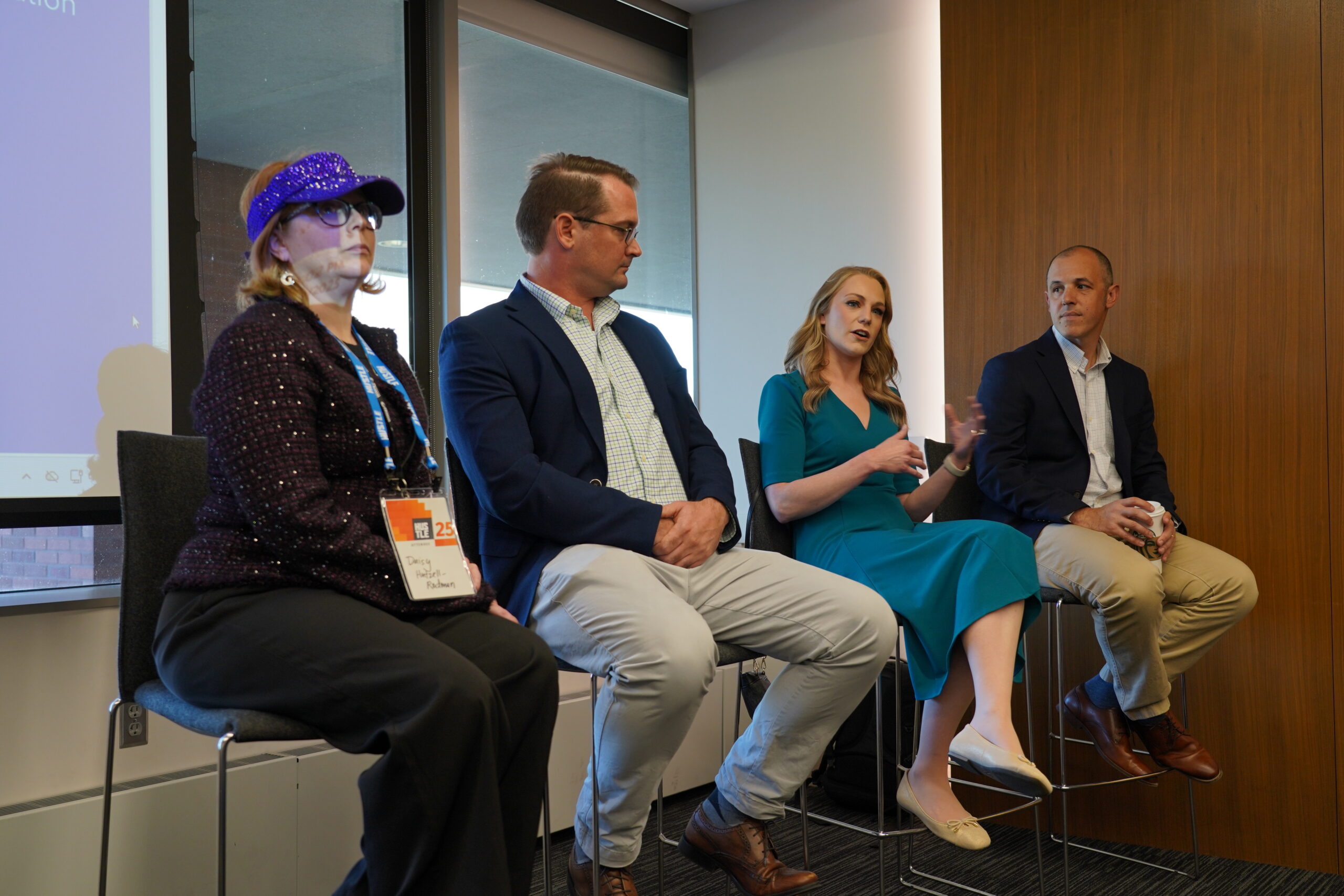Attendees of Silicon Prairie Startup Week 2025 and the Hustle Conference had the chance to meet with representatives from local news outlets during a panel organized by SPN at Creighton University. Called How to Tell Your Founder Story, reporters and editors shared what they look for in determining whether to pursue a story pitched by an entrepreneur. The panel also highlighted the benefits of a company appearing in print news or a broadcast.
Peeq Pro Co-founder and CEO Tom Chapman led the conversation, using his experiences with building awareness for his startup as a real-world example Panelists included Omaha World-Herald Executive Editor Ben Doody, WOWT First Alert 6 Anchor and Investigative Reporter Erin Sullivan, Omaha Magazine Executive Editor Doug Meigs and Midlands Business Journal Executive Editor Daisy Hutzell-Rodman.
Chapman said a primary outcome for getting a founder’s story published by a news outlet is to increase the authority and trustworthiness of a company, which increases consumer interest and a company’s SEO. Panelists said getting a story published allows a company’s message to appear in front of audiences across websites, social media accounts and other mediums used by publications.
The following are key takeaways for entrepreneurs to consider when sending a press release or other updates to a news outlet, according to panelists:
Familiarize yourself with the publication and its audience
Each news outlet has its own goals and target audiences. Make sure the content you provide aligns with these areas and isn’t geared toward readers of different educational backgrounds or interests. A good way to be aware of what a publication is looking for is to read or watch its previously published work.
“I want to see that business angle,” Hutzell-Rodman said. “If you’re going to go on the news, you’re definitely going to hit the general public. If you’re going to MBJ, you’re going to be talking to business leaders.”
Different mediums require different considerations. For example, a written article published in an online newspaper or magazine opens up more opportunities to go in depth about research and solutions, origin stories and other likely more complicated ideas. However, it may take longer to be published or require more advance notice to its editorial team in order to fit into the publication’s editorial calendar.
On the other hand, a TV broadcast is often able to act more immediately on an announcement — getting a story shared across channels that day. But with the importance of visuals, characters and the influence of limited air time, news stations will need to communicate details in more condensed terms while also appealing to audiences on an emotional level.
Make your company’s story, team and mission easily discoverable and approachable
Panelists said that newsrooms typically receive multiple press releases and pitches daily, which leaves little time to dedicate to analyzing each one while managing other deadlines.
Editors are more likely to ignore a pitch if a company lacks a digital presence or detailed landing pages on its mission statement, leadership, awards and recognition and other contextual information.
“Make it as easy as possible for us to know who you are, what you’ve done — have the stuff kind of teed up,” Doody said.
To make a story stand out in an inbox, Hutzell-Rodman said she recommends businesses follow an “inverted pyramid” approach, making the first sentence or two dedicated to the most important and newsworthy announcement. Panelists also said they wanted to see the human within the writing — whether that be impacted consumers, the entrepreneur opening themselves up with contact information to further chat about their story idea or founders being open to follow-up interviews.
“I was in an interview just a few weeks ago. The person was literally reading from talking points,” Hutzell-Rodman said. “It sounds canned. It’s not a story.”
Consider global trends and topical concerns to leverage your expertise related to your business
Panelists said entrepreneurs should be aware of how their content can fit into larger discussions and concerns that already are on the audience’s mind. This could be tapping into global events, policy concerns or social trends and providing context on how they connect on a local level through a company’s work.
“I think people just want to feel connected to the story, even if it’s not happening in your neighborhood,” Sullivan said.
“We’re competing with all the millions of things that everyone’s doing at that exact time, between other headlines in your social feeds, text messages that are popping in, push alerts — whatever else is going on in your life,” Doody said.




Leave a Reply